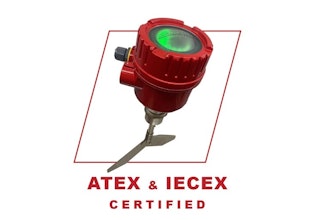Unlike other industries, the manufacturing and production industry is no novice when it comes to project management. Nevertheless, staying focused on how best to execute project management tactics is often hard and overlooked, especially when pressured for time and/or funds. So, let’s take a look at 5 project management lessons that are worth remembering throughout your entire career in manufacturing.
No. 1 - Keep your PM as dynamic as your processes
Manufacturing is geared towards efficiency in production and output, adapting processes to product demand, changes in resource availability, and, in the long run, to innovations in the industry. How is this achieved? One way is lean project management, which allows you to stay flexible and dynamic by eliminating waste to streamline processes.
Waste is defined by the ‘Triple M’: Muda, Mura, and Muri. Muda describes seven types of waste or actions that do not add any value to process, such as defects, overproduction, or over processing. Mura, waste of unevenness, and Muri, waste of overburden, are often overlooked but actually describe the roots for most of the Muda wastes. Customer demand typically fluctuates, is uneven, so to speak, and it may seem arbitrary. However, there is usually a pattern that if overlooked by the manufacturing company causes shortages or oversupply. Equally, overburdened employees are often the cause for defects, be it because of lack of training, shortage in skilled workers or unreasonable demands they cannot fulfill.
Lean project management can help prevent Muda, Mura, and Muri wastes by identifying which processes within your project result in the most waste. Start with a work breakdown structure that helps planning work packages and deliverables. It gives a clear structure and distributes responsibilities among the team. Make this plan available to everyone involved so that employees know what they need to do to produce deliverables and have a clear perspective of the goals. This calls for an experienced lean project manager who oversees the project, the team members and the work environment.
No. 2 - Keep your project on track
This experienced, lean project manager will keep your project on track by taking on different roles. Take a cue from the German soccer team and how they won the FIFA World Cup in 2014. Not one team member only had one role. For example, the goalkeeper who occasionally acted as a sweeper, or the mid-fielder who seized the opportunity to score a goal when the other strikers were unavailable. What does it take to change from one role to another and not falter? A good skill set that comprises hard skills and soft skills.
If project managers are to streamline processes, they need to be detail oriented without neglecting the big picture. Problem solving often requires aiming for small changes over a longer period of time while at the same time troubleshooting with immediate effects. Project managers need to be team-oriented and be able to motivate, but also not be afraid to display strong leadership and make unpopular decisions for the success of the project. If you have such a person on your team, congratulations. They will be able to identify wastes, streamline and standardize, and create a work environment where everyone is eager to contribute to the success of a project.
No. 3 - Keep your PM simple
How exactly do you streamline and standardize processes in manufacturing? Here, classical project management methods such as the creation of a project schedule, BOSCARD for strategic planning and approval, and the aforementioned creation of a work breakdown structure, are essentials. They form the basis for the project manager to identify dependencies, merge processes and standardize procedures such as project approvals or develop a standard inventory that needs to be at hand not only for the current project but for any other. These standardizations keep project management simple because you produce best practices that employees can return to over and over. In order to find best practices for your standardization, communication among your team is key. The information each individual holds needs to be available to everyone. Time is also a factor, so shortening your communication chain is inevitable.
No. 4 - Keep your knowledge transfer transparent
How is knowledge handled not only within a team, but in a company? Knowledge management is a fairly new method within the project management sphere and there are a lot of tools out there. All tools aim at making knowledge available to those who need it, when they need it, and there are many different ways of accessing knowledge. Making employees’ expertise available to everybody starts by keeping track of all the knowledge that is kept by individuals.
Useful and already established tools are keeping a project and expert database, using a document management system, having a debrief after each project or a knowledge transfer when somebody leaves the team or department, or having regular work inspections where employees visit each other at their work site. Then, the gathered knowledge needs to be made available for everyone. There are also many tried and true approaches, such as using your project management software as a collaboration management software, keeping a searchable intranet wiki, establishing a virtual forum or having a newsgroup that alerts the right people to newly added knowledge.
For this to be successful, an open work culture has to be in place where someone’s knowledge is held in esteem and sharing that knowledge is seen as contributing to the overall success of the company. Here, a project manager’s skill of detecting knowledge acquired with one project that can be utilized in other projects is of great value.
No. 5 - Always be improving your processes and product
Where does this leave those in manufacturing? It all boils down to combining project management skills and tools with established methods in manufacturing to improve processes and products. In order to keep the infamous ‘Triple M’ constraint in check, the aforementioned lessons provide a good basis to get better at getting better.
Time, cost, and scope of a project are interdependent and changing one affects the others. Improving the overall quality of the product is usually key as future contracts and projects depend on current customer satisfaction, but are rarely achieved without changes to time, cost, and scope. This is where your lean project manager, your knowledge database, and your streamlined processes aid you in making small changes.
Improvements to costs at the expense of more time spent on one step in your project plan can free up time later when you need to allocate more resources to keep within your set time frame. Your customer may add another detail, thus, increasing scope which you may be able to accommodate because you have documented a similar process in your knowledge database and can easily adjust that to the current project without additional resources. This is a constant process of documenting, assessing results, prioritizing and reviewing — one step at a time in a continuous procedure of improvement.
Andreas Tremel, CEO and co-founder of InLoox.























